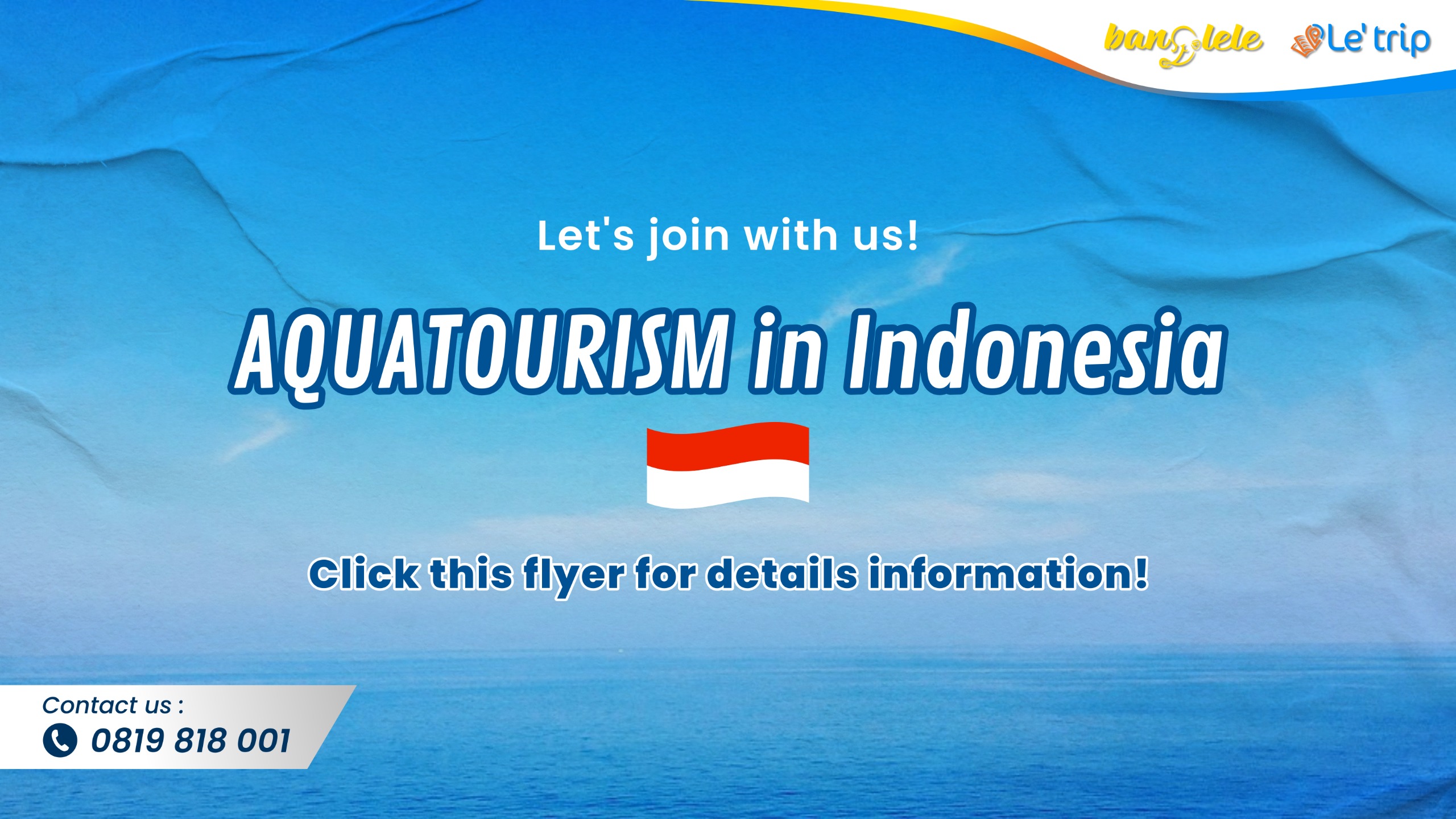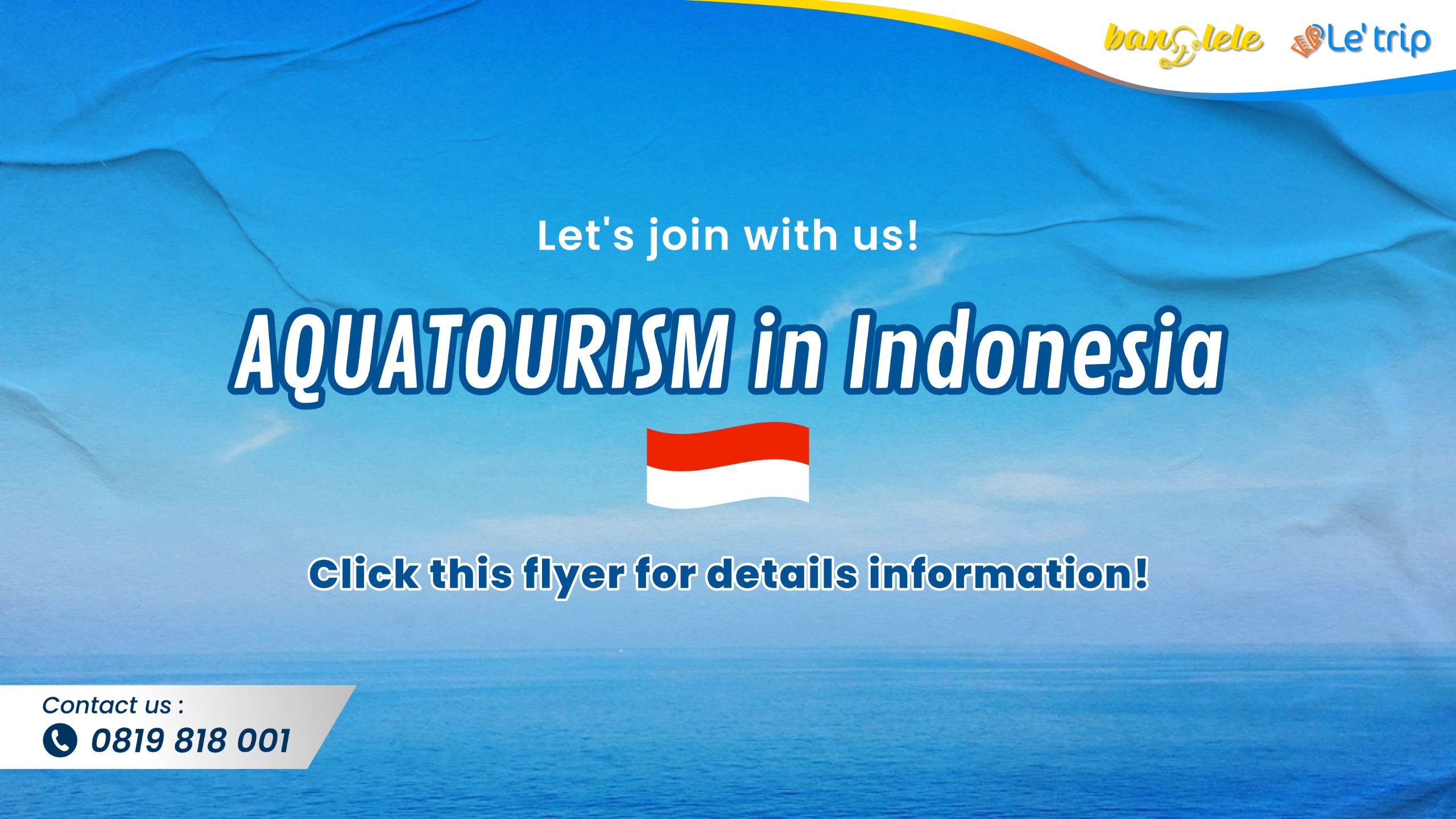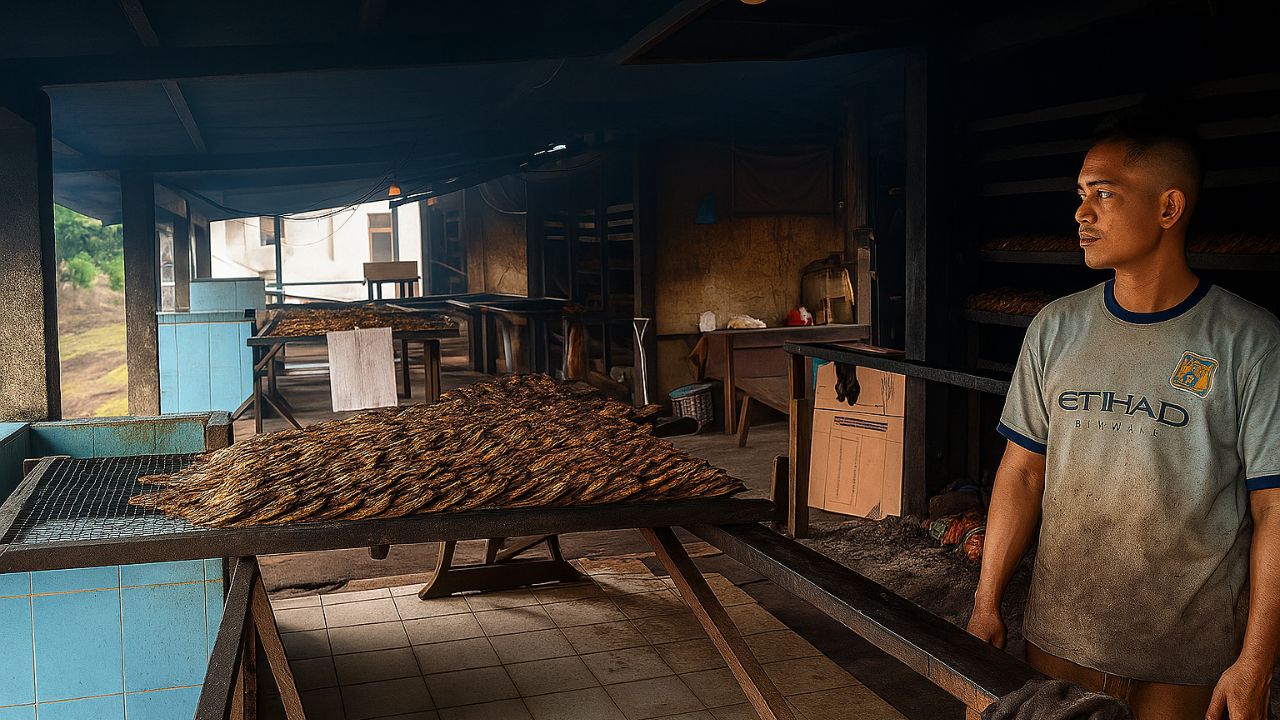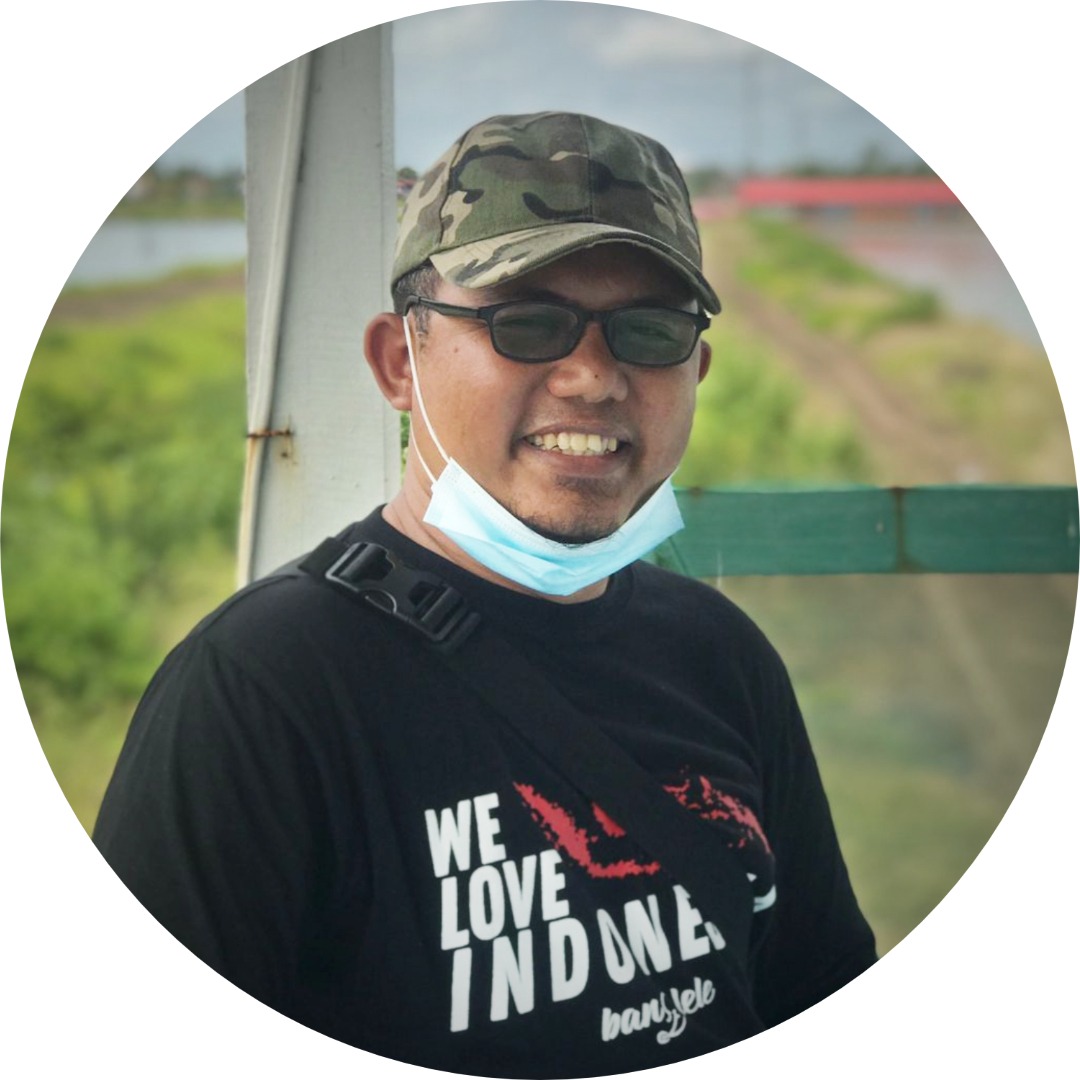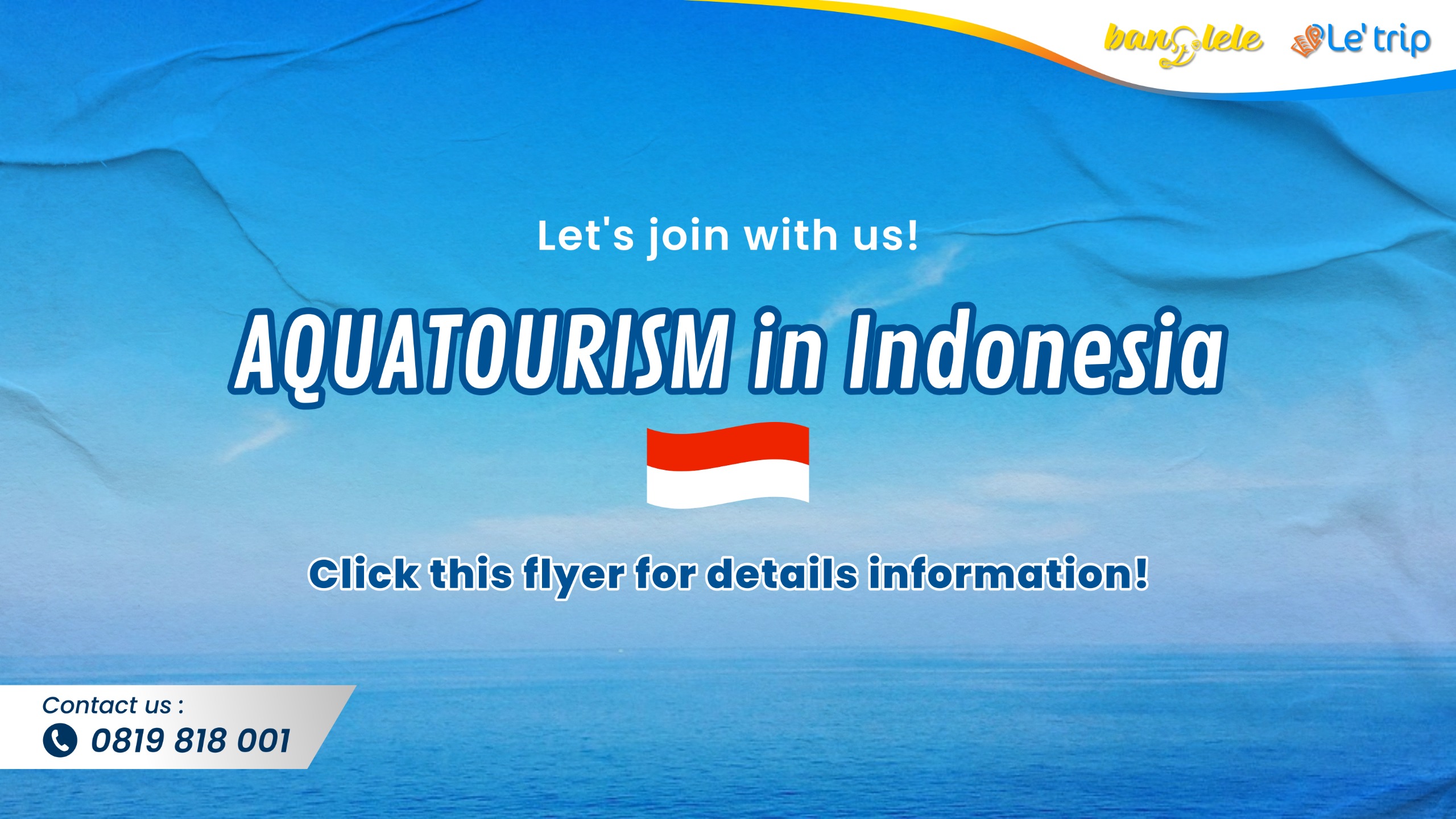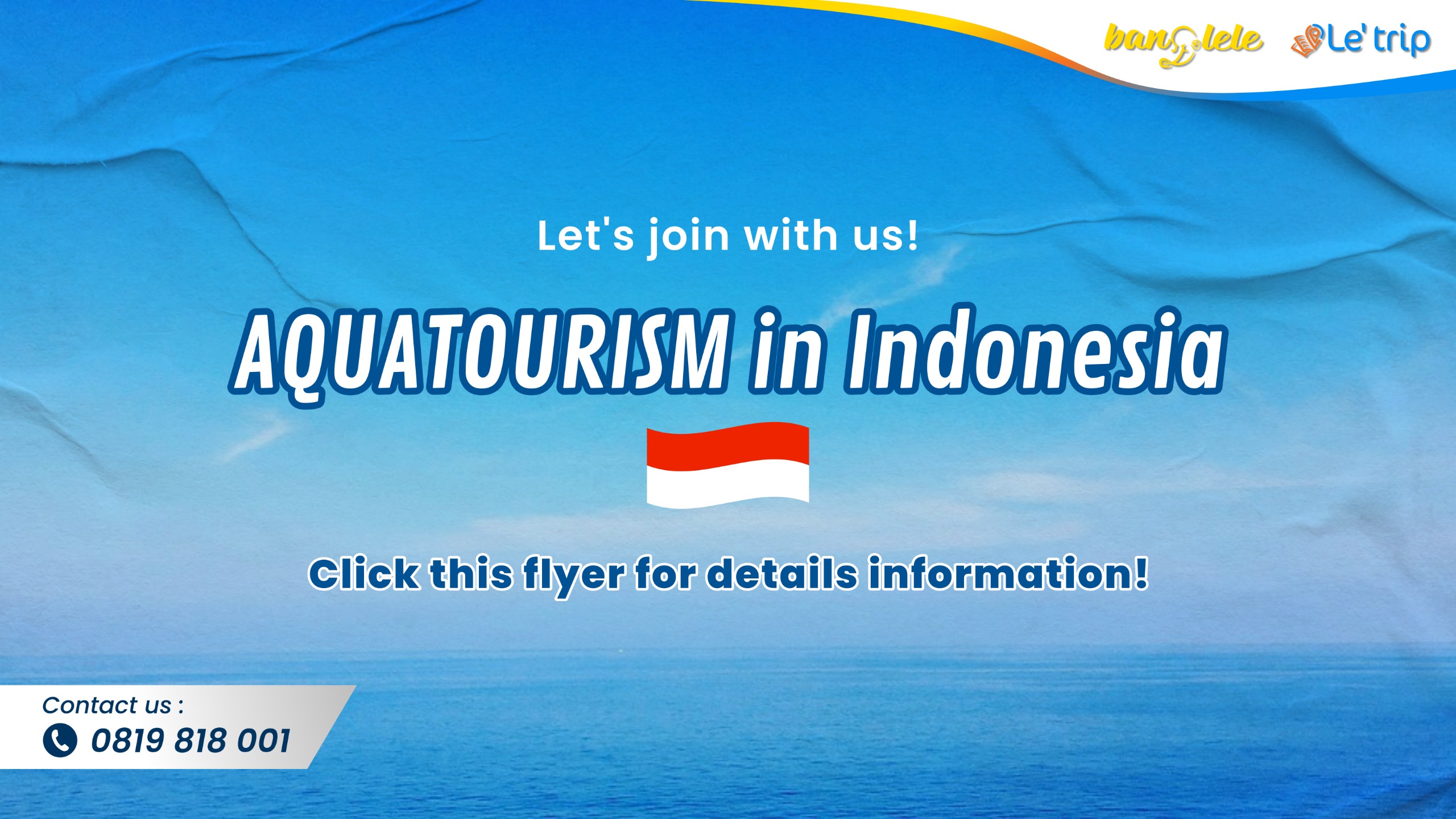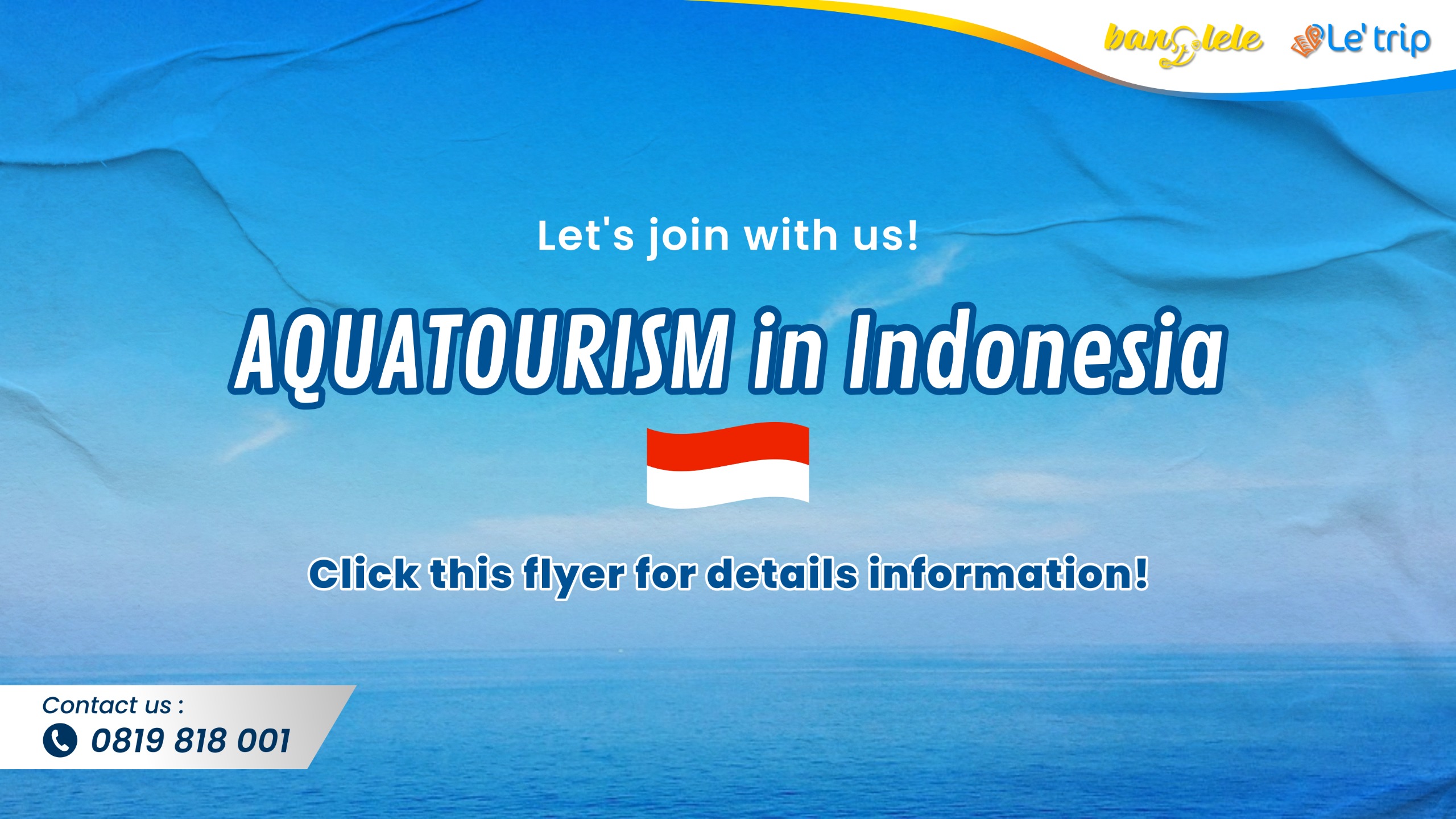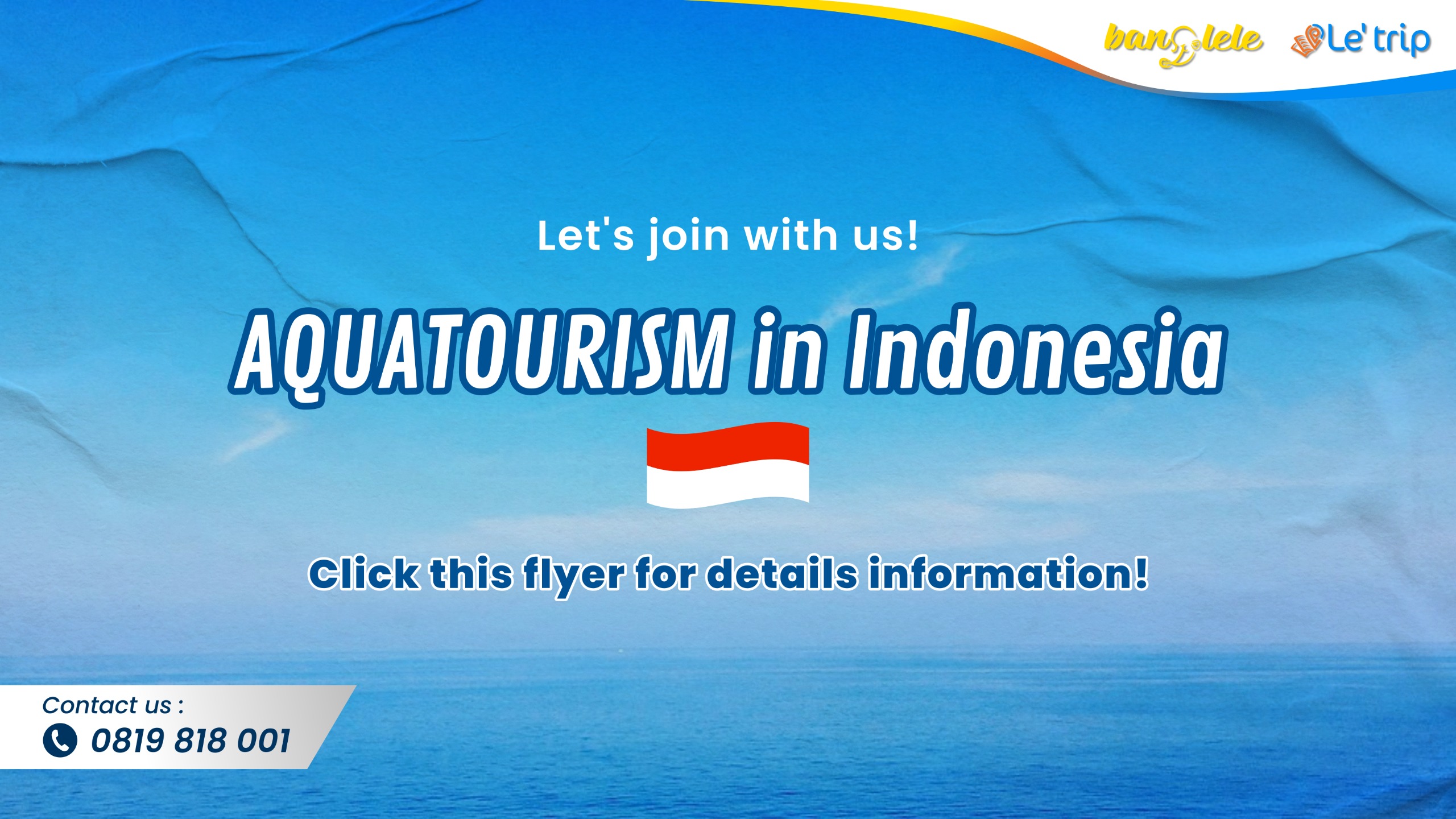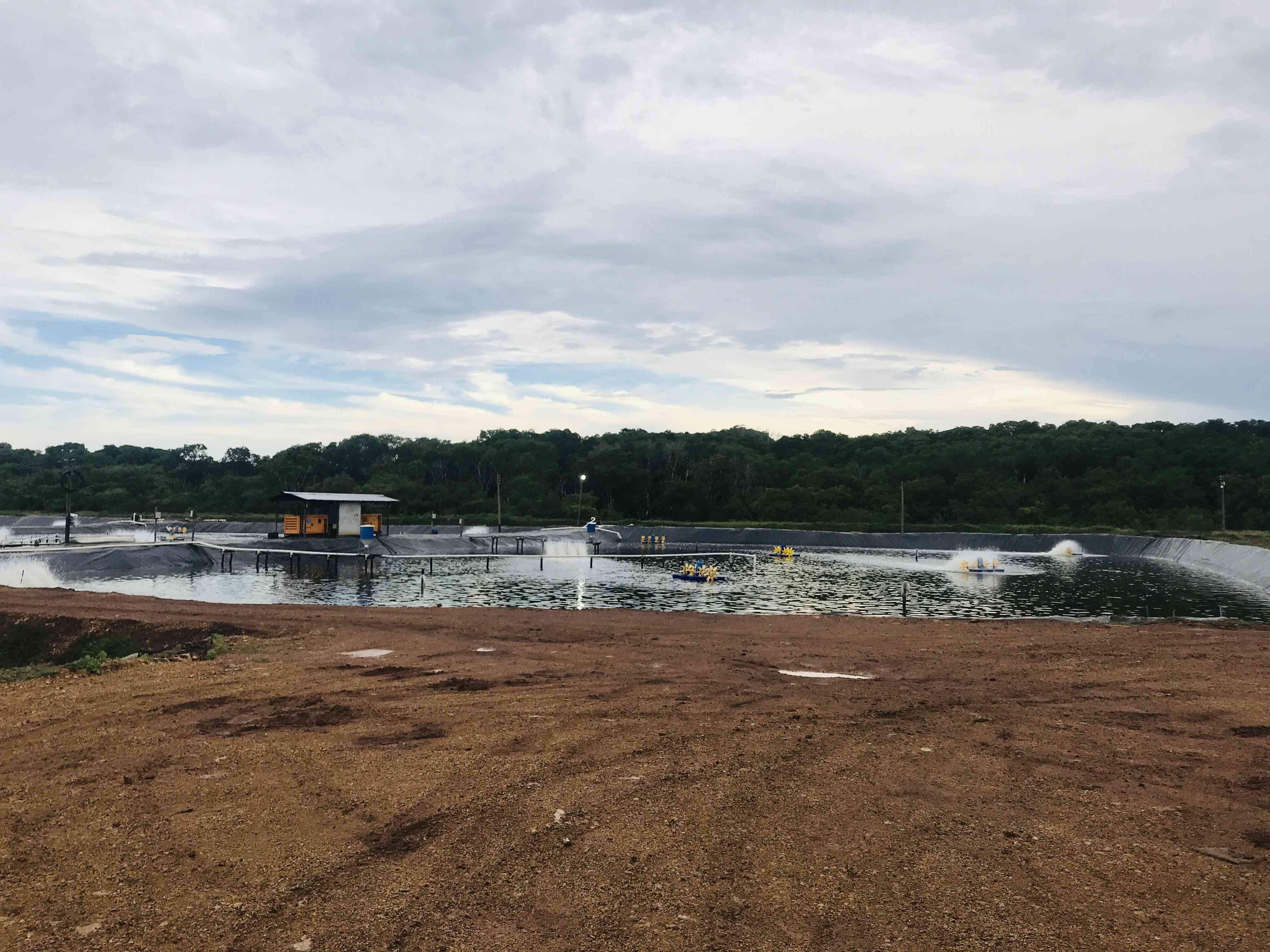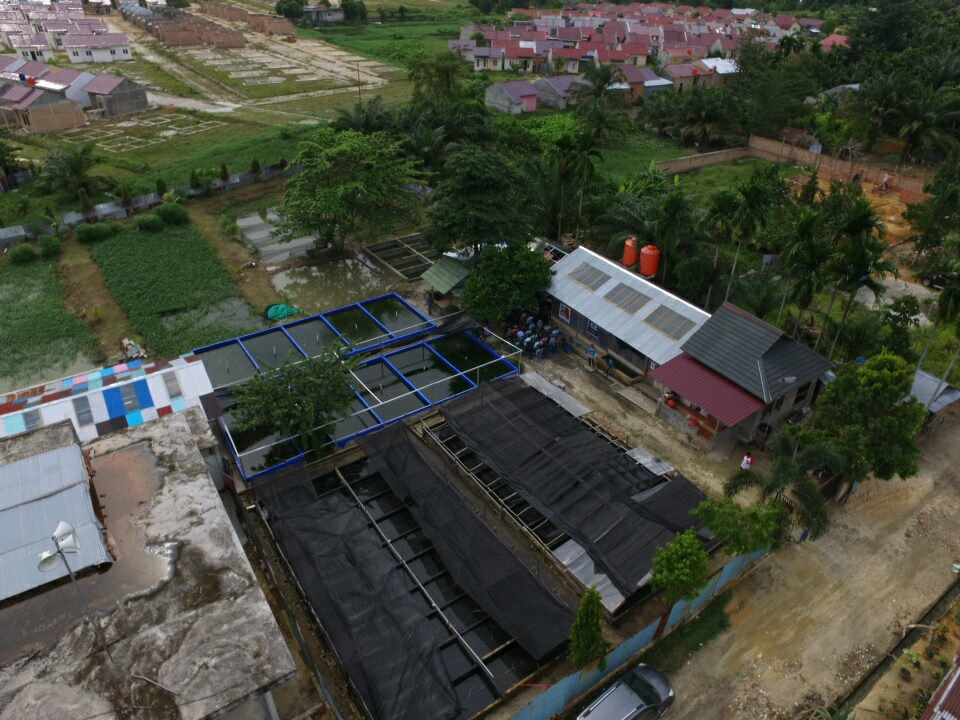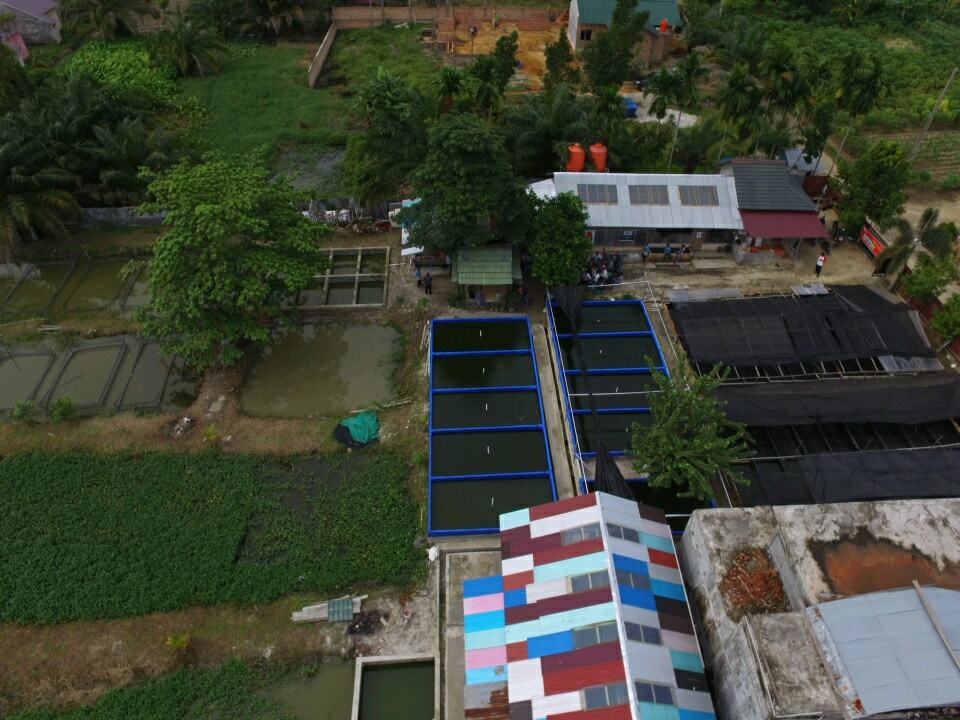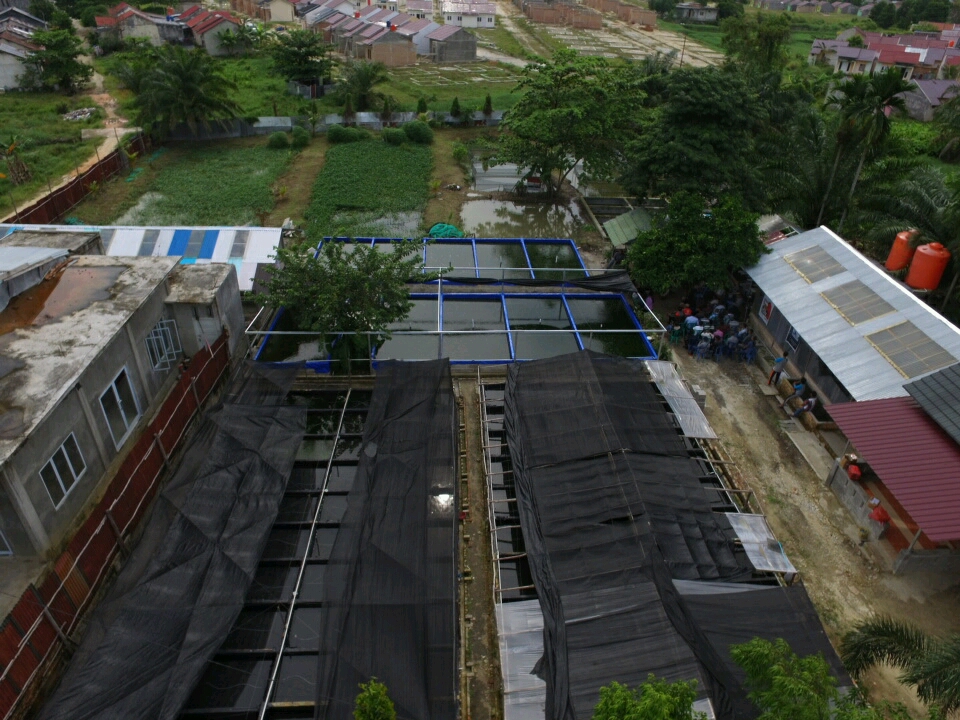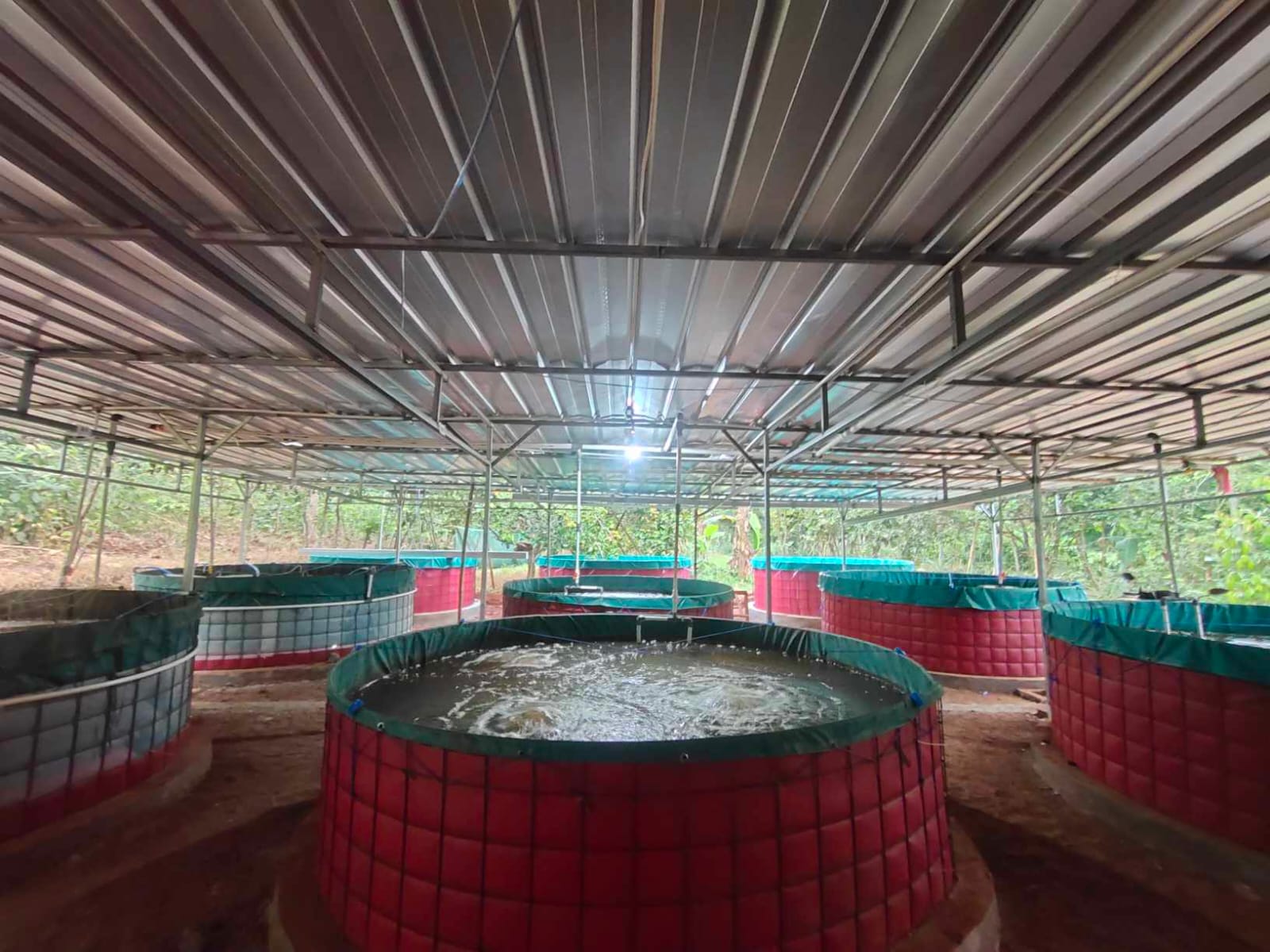A visit to Koto Mesjid Village in the XIII Koto Kampar district of Riau, Indonesia, begins with an appeal to the senses. The savory aroma of smoked pangasius drifts from communal smokehouses, mingling with the damp, earthy smell rising from hundreds of fish ponds that dot the landscape. This is the signature of a place that has earned its moniker, "Kampung Patin" (the Pangasius Village).
Here, a simple slogan, "Tiada Rumah Tanpa Kolam" ("No House Without a Pond"), is not just a motto but the defining principle of the landscape and the very pulse of community life. The sight of pangasius aquaculture ponds stretching across the backyards of nearly every home is a testament to a profound and integrated transformation. To speak of Kampung Patin is to speak of a remarkable rise from the depths of loss.
In the early 1990s, the original village was one of five submerged by the construction of the Koto Panjang Hydroelectric Dam. Displaced and relocated to new land, the community faced an uncertain economic future, relying on rubber plantations that frequently failed. Yet this double crisis—the loss of their ancestral home and the collapse of their livelihood—became the unlikely catalyst that forged unbreakable social bonds and a powerful collective will to survive.
Starting with swampy land once deemed unproductive, the villagers innovated, turning the marsh into a powerful, fish-based economic engine. Today, Kampung Patin has evolved into a fully integrated production hub, from breeding to market. It stands as a nationally recognized model of socio-economic resilience, earning First Place in the National Tourism Village Assistance Program in 2020 and a place among the Top 50 in the Indonesian Tourism Village Awards (ADWI) in 2021. Now, this community stands on the threshold of the global stage, ready to share its story as a living example of sustainable, competitive, and resilient rural development.
The integrated upstream-downstream fisheries model in Patin Village
The economic strength of Kampung Patin lies in a vertically integrated value chain that encompasses every stage from production to processing and marketing. This model has cultivated a circular economic ecosystem that minimizes reliance on outside parties, maximizes added value, and distributes prosperity equitably throughout the community.
The upstream chain: a foundation for mass production
The foundation of the village’s industry is the philosophy of "No House Without a Pond." This is more than an identity; it is a clever, decentralized production strategy. With more than 776 ponds spread across an area of over 160 hectares (approximately 395 acres), this approach distributes economic benefits across all layers of society, fostering mass participation and a shared sense of ownership.
The scale of production is massive. The village can yield 15 to 20 metric tons (16.5 to 22 short tons) of fresh pangasius each day, totaling around 450 metric tons per month. This volume generates a daily cash flow of approximately IDR 190 million, making it the primary driver of the local economy.
One of the village’s most significant strategic advantages is its self-sufficiency in producing fish feed. In aquaculture, feed costs can account for as much as 80 percent of total operational expenses. By establishing 32 independent, locally-owned feed production businesses, the community has successfully broken its dependence on more expensive commercial feeds. This initiative not only slashes production costs but also creates additional jobs for dozens of families and provides a steady market for local suppliers, who provide 35 to 40 metric tons of raw materials for feed production daily. While technical details on breeding are not widely recorded, the village actively organizes training in hatchery techniques and cultivation, supported by the local Fisheries Service and academic institutions like the University of Riau, ensuring a continuous transfer of knowledge and innovation.
Pangasius fish hatchery facilities in Patin Village: Banglele Indonesia
The downstream chain: innovation that creates added value
If the upstream sector is the heart of production, the downstream sector is the brain, where innovation multiplies the economic value of each fish. The people of Kampung Patin did not stop at selling fresh fish. They have developed an impressively creative and diverse portfolio of processed products.
Their flagship product is salai patin (smoked pangasius), whose traditional production process has become a tourist attraction in itself. But their creativity extends to a wide range of derivatives, including fish floss (abon), nuggets, meatballs (bakso), dumplings (siomay), and crackers made from fish skin (kerupuk kulit). They have even developed unique products like a pangasius-based version of the traditional dessert es dawet, each designed to capture different market segments.
To support this processing industry, the community has built essential infrastructure, including 12 communal, locally managed smokehouses. These facilities are key to standardizing quality and scaling up capacity. A single smokehouse, for example, can process 4 metric tons (4.4 short tons) of fresh pangasius into approximately 700 kilograms (1,543 pounds) of smoked fish in just eight hours. This capacity allows Kampung Patin to meet significant demand from both domestic and international markets. Their products have successfully penetrated markets in provinces across the islands of Sumatra and Java and are even exported to Malaysia.
Learn, feel, and enjoy: the immersive tourist experience in Patin Village
The primary allure of Kampung Patin as a tourist destination is not merely its scenery but the experience it offers. The concept of educational tourism here is profoundly immersive, transforming visitors from passive observers into active participants in the village's full fishery life cycle.
The experience is a "living curriculum" in aquaculture. Visitors from all walks of life—from schoolchildren and university students to families and international tourists—are invited to engage directly in every stage of the pangasius value chain. They can learn breeding techniques, help mix the independent fish feed, feel the thrill of pulling in a harvest net, and try their hand at filleting and smoking fish in traditional smokehouses. This direct involvement fosters a deep appreciation for the final product.
The uniqueness of Kampung Patin is enriched by a synergy between its core educational focus and the surrounding natural and cultural beauty. Tour packages extend beyond the fish ponds. Visitors can journey to Puncak Kompe, a viewpoint offering a panoramic vista of island clusters in the Koto Panjang Reservoir, a scene often compared to the famed Raja Ampat archipelago. Other options include enjoying the natural freshness of the Sungai Gagak waterfall or camping in the tranquil Lembah Aman (Safe Valley). The village also offers cultural attractions, such as the Talau Pusako and Khotib Adat 4 Suku traditional rituals, which provide insight into local wisdom. This combination turns a short visit into a multi-day holiday, supported by more than 18 affordable homestays managed by local residents.
The educational and recreational journey culminates at the dining table, where the concept of "from pond to plate" is realized literally. Visitors can taste the direct results of the processes they have just learned about. Local eateries serve a variety of pangasius dishes, from freshly grilled fish and a rich, spiced smoked pangasius curry (gulai salai) to snacks like fish meatballs and dumplings. Visitors can even participate in live cooking events, a highlight of the tourism program, such as those organized by partners like Banglele Indonesia.
This culinary experience provides a satisfying conclusion to any visit. Furthermore, a souvenir center selling packaged products like fish floss and skin crackers serves not only as a vital source of income but also as a team of marketing ambassadors for the village's signature goods. The quality of these products has been nationally recognized, earning Second Place in the Souvenir category at the 2021 Indonesian Tourism Village Awards.
Nugget product from Patin Village: Banglele Indonesia
Toward the world stage: aquatourism and international collaboration
Having earned national acclaim, Kampung Patin is now preparing to step onto the global stage. A pivotal moment in this transition is the development of an "Aquatourism" program, an initiative marking a strategic collaboration between local expertise and international standards.
Banglele Indonesia has been a key proponent of the Aquatourism concept in Kampung Patin, framing aquaculture as an integral part of the blue economy that can be leveraged for education, cultural diplomacy, and sustainable development. Within this framework, Kampung Patin is positioned as a prime case study of a village with a self-sufficient, end-to-end fishery system.
This initiative is set to materialize in an Aquatourism program organized by Banglele Indonesia in Riau-West Sumatra in June 2025, in partnership with the CaPFish team from Cambodia. CaPFish is a program funded by the European Union and implemented by the United Nations Industrial Development Organization (UNIDO), with a proven track record of transforming Cambodia’s post-harvest fisheries sector. Their expertise lies in three crucial areas: standardizing food safety according to international protocols like HACCP, implementing digital traceability systems (Cam Trace) from farm to fork, and facilitating market access to developed economies, including the European Union and Australia.
The prospect of Patin Village as a living example of sustainable development
Kampung Patin in Koto Mesjid Village has proven that limitations can be transformed into strengths and that crisis can be the starting point for a revival. The village’s success is built on a foundation of social resilience forged by history, an innovative and integrated economic model, an authentic and immersive tourism experience, and highly effective multi-stakeholder collaboration.
However, the journey ahead is not without its challenges. Long-term sustainability will depend on the village’s ability to address environmental issues, particularly waste management and pond water quality, as production continues to scale. Furthermore, regeneration of leadership is needed to ensure the vision of the pioneers is carried forward by the next generation, while the capacity for continuous innovation will be a determining factor in navigating future competition.
The future vision for Kampung Patin must align with its status as a premier tourism village. With its achievements and established systems, the community has immense potential to become a living laboratory and an international training center for community-based Aquatourism. The future of Kampung Patin lies not only in exporting pangasius but in exporting knowledge, models, and inspiration—showing Indonesia and the world how a single village can build sustainable, equitable prosperity rooted in the strength of its own community.

